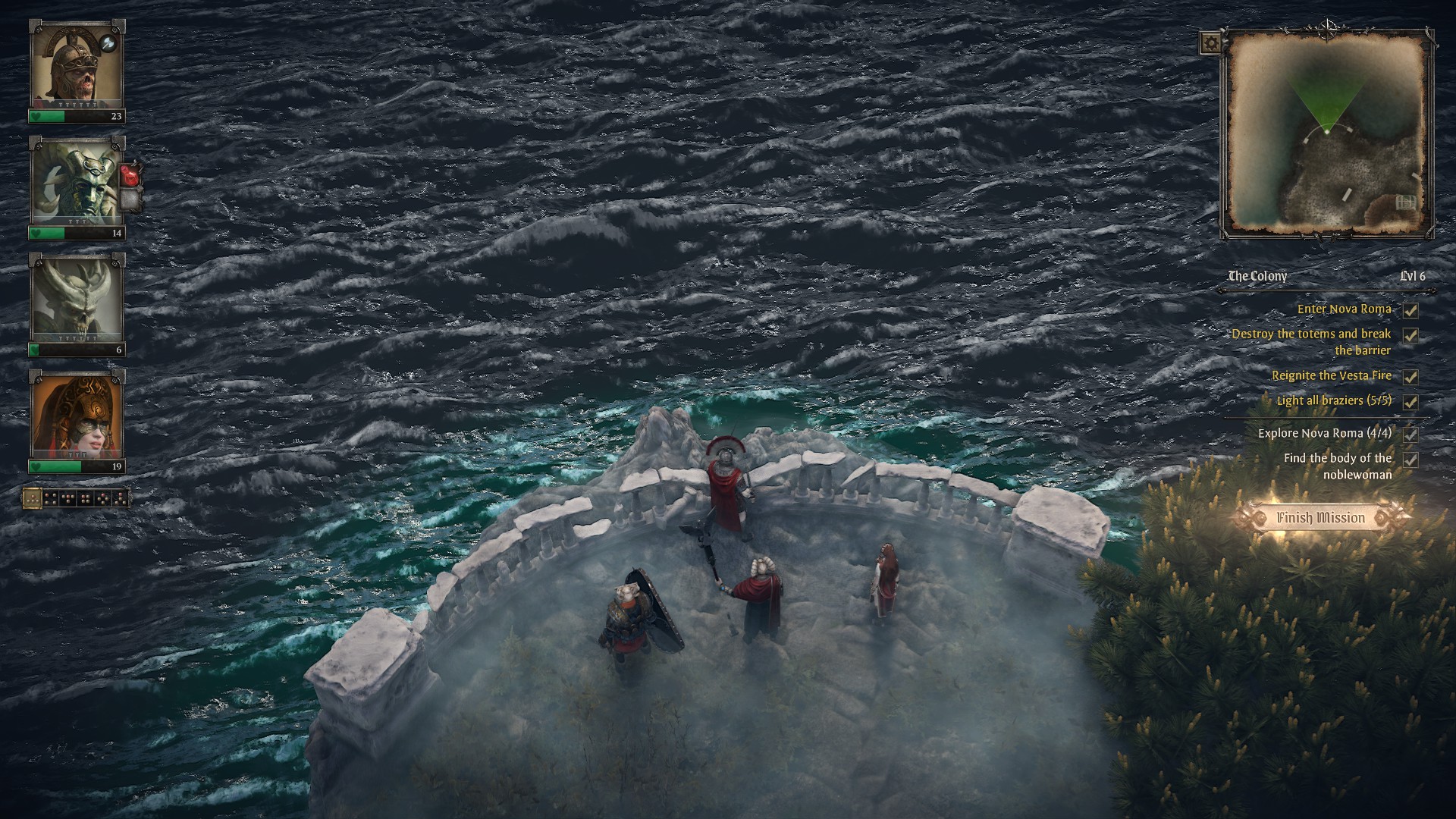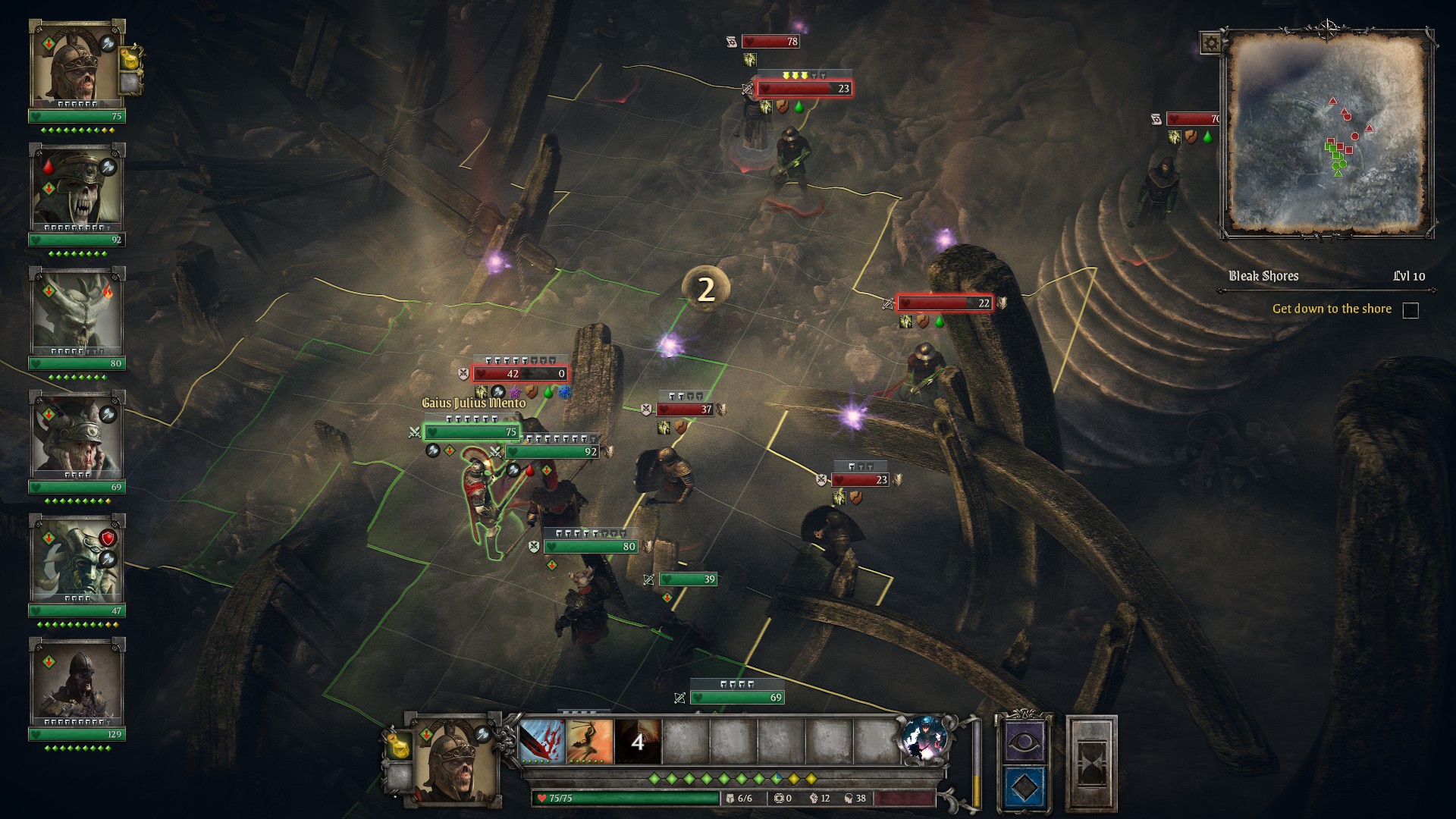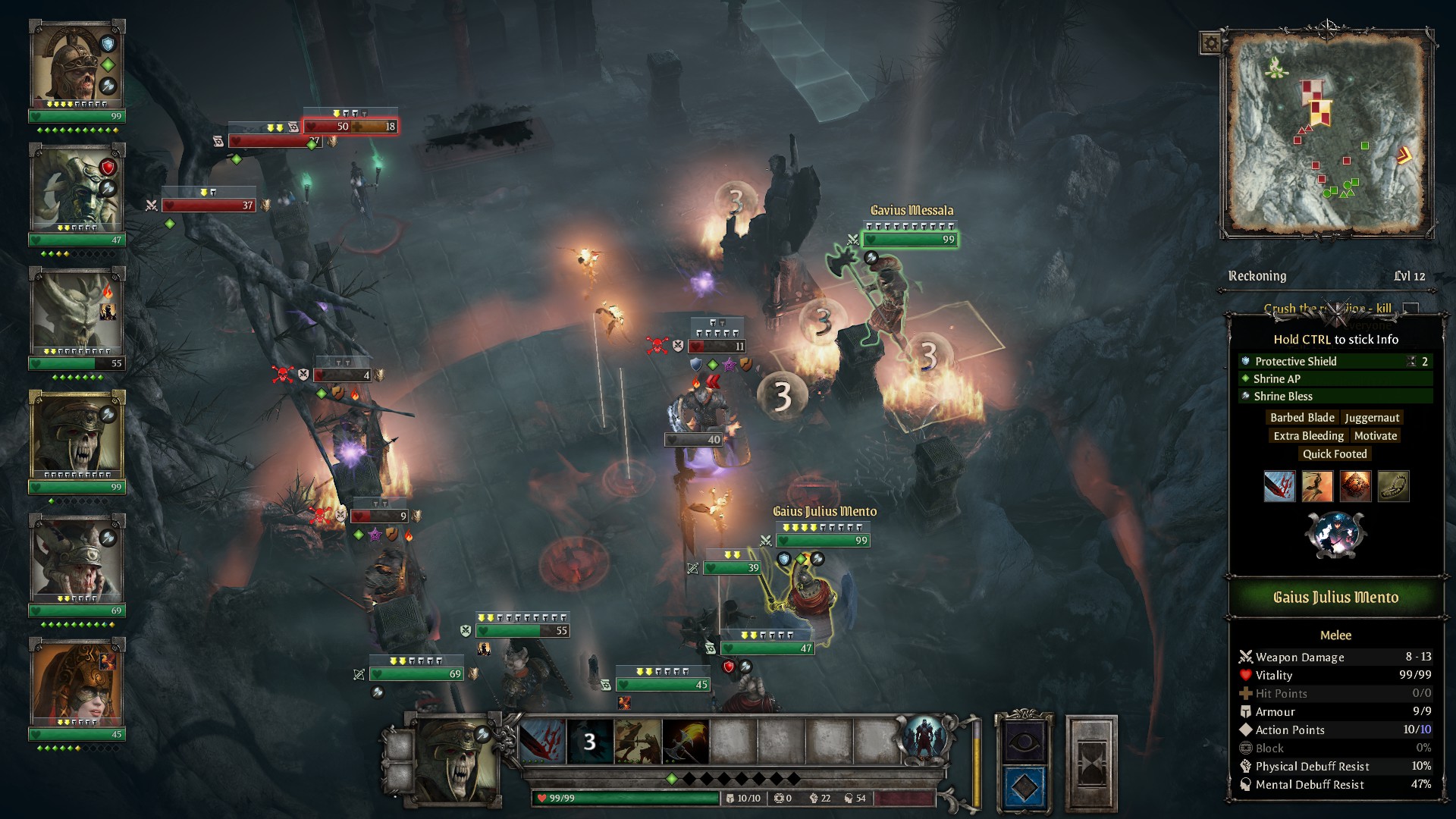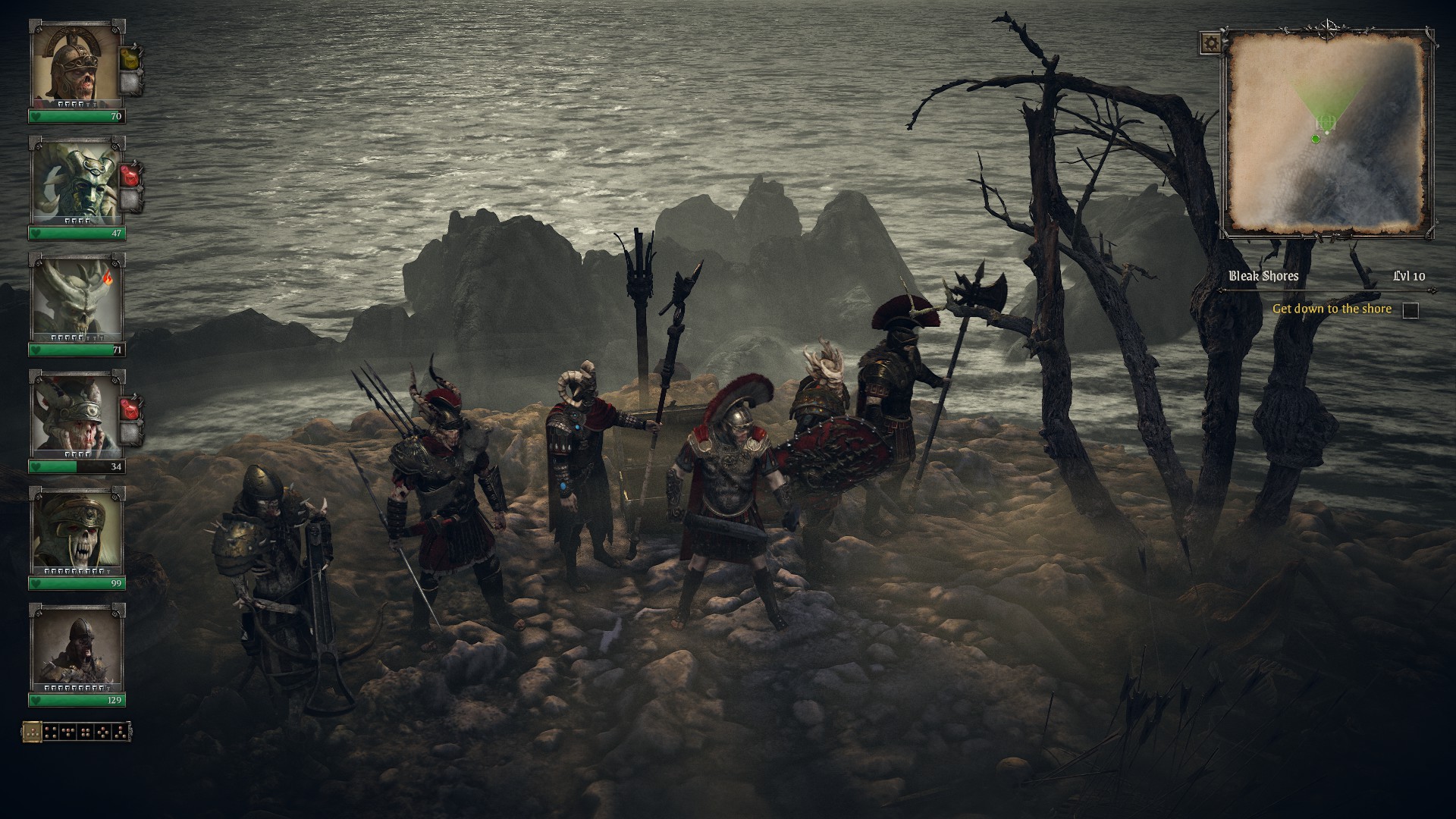A year or two ago fellow Finger Guns enthusiast Kat asked me “How often do you think about the Roman Empire?”. “About once a week”, I nonchalantly replied. The look of surprise on her face was only matched by her anguished “um… why?”.
Turns out, it was an internet trend, and I, like many other people, have an avid fascination with Ancient Rome. Long story short, King Arthur: Legion IX is set against the backdrop of said empire, so naturally I was always going to want to play it.
Aside from my ruminative obsession with the gladiatorial city, King Arthur: Legion IX kindled my interest as a turn-based strategy game. I completely missed Neocore Games’ first entry in King Arthur: Knight’s Tale, so be aware of my lacking prior knowledge. Even so, the sequel impressed me in many a fashion, even ignoring its particularly appealing setting.
Does it rank amongst the greatest of emperors, sitting alongside Caesar himself?
I Shall Have My Undead Revenge
Straight out of the chariot gate, King Arthur: Legion IX is an eclectic story. You are Gaius Julius Mento, a fallen Ninth Legion warrior resurrected in the between-life-and-death world of Avalon. Accompanied by your (also very undead) soldiers, you must charter a means out of Avalon. To do so, you must rebuild Nova Roma into a new sprawling Eternal City and summon the remains of a once-fabled army.
While the voice acting for the main cast is serviceable, side characters and NPCs are pretty atrocious. Dialogue and story beats are surprisingly interesting, you know, for a game about the reanimated corpses of Ancient Rome navigating purgatory. It’s not helped by the subtitling often not matching the spoken word though, it must be said.
One strong draw for the game’s narrative is the moral choices and party decisions you make along the way. Mento can either choose to harness the powerful demonic energy of their undead ties, or attempt to cling to what’s left of their humanity. Everything is clearly marked as a “human” vs “demon” pathway, and there are rewards for either route you so choose.
Choices and morality will impact the loyalty of your party members, increasing or reducing their combat effectiveness, which provides some gameplay ramifications. Unfortunately, the ending felt incredibly anti-climactic, feeling to me like it ended an act earlier than it was supposed to. It didn’t help that the ending video was A) the wrong one for the path I’d selected and B) only had a placeholder still image.
Now, I love Roman history and everyone loves zombies, so there’s still quite a bit to appreciate. It’s a Sean of the Dead movie, but with more Praetorians and no Winchesters to wait for it to all blow over. The narrative flaws are obvious, but the setting and ambition carry King Arthur: Legion IX some of the way.

A Legion of This, A Legion of That
Of course, it would be far too easy if Avalon could be comfortably traversed without any hardship. A gladiator has to earn his freedom, after all. The gameplay in King Arthur: Legion IX is of turn-based variety, with the usual helpings of action points, abilities and status effects to navigate. I played on normal and with the exception of two unnecessarily massive difficulty spikes, it was a great time.
You’ll control Mento and his party of up to five other Roman warriors in each encounter. Each member has their own unique characteristics to combat. Remus soaks up damage and acts as your tank. Sicarius launches javelins and can deploy a scorpion turret. My personal favourite was Virgilia, who can launch autonomous fire birds and send beams of flame hitting multiple enemies at a time.
The combat system itself is intuitive and easy to pick up, making this a decent entry point for less experienced players. If anything, I’d recommend bumping up your difficulty to hard if you’ve played a few turn-based games before. King Arthur: Legion IX’s combat encounters are consistent throughout the majority of the game, which may be slightly underwhelming for some veterans.
Personally, I found the blend of character abilities to be engaging throughout. While enemy variety and objective types are fairly repetitive, mastering your party’s composition and knowing how best to utilise terrain carries the formula a long way. Rome wasn’t built in a day, but the Ninth Legion hurling poisoned javelins surely helped.

Roma The Land
Completing missions and progressing the story will level up your party members, ripe and ready for skilling up. Between levels, you’ll return to the world map and Nova Roma, your menu hub for improving your squad. Here, you can assign skill points for abilities, purchase or sell equipment, invest in upgrades and make 1-2 moral decisions.
Sadly, Nova Roma is relegated to a glorified menu, but the hub aspect adds a welcome reprieve after a gruelling battle. The level system is also superb – you invest skill points into active abilities or improvements to skills, instead of just passive stat boosts. There’s a notable shift in how aggressively you can play the further in you get, which provides an enjoyable skill curve.
In terms of loot, King Arthur: Legion IX is an odd one. Most of what you’ll pick up will be fodder, worse than most of what you already have, especially in the second half. Each weapon, armour or accessory rune does have distinct characteristics, allowing you to tinker builds nicely, however. Again, they could have gone the route of straight-up stat differences but chose the more interesting loot option, which I appreciated.
The majority of my 12 or so hours were either spent in combat or sifting through inventories at Nova Roma. The rest is spent clicking to navigate through the levels, which are small-medium-sized maps. Most missions have a side objective or two, and your exploration is somewhat rewarded. However, it’s not essential, and you can burn through the main objectives if that’s your choosing.

The Eternal Bugs
Reaching the end of the story required tenacity, patience and a whole lot of stubbornness. You may think this is due to the intensity of the gameplay or the intricate strategy that’d be required – you’d be wrong. Oh no, instead, the real Achilles to this game’s heel is the persistent crashing and horrendous difficulty spiking.
With an almost 100% (un)success rate, King Arthur: Legion IX would crash my PC and force a restart when going through and allocating skill points to my party. It happened at least a dozen times and made me question if finishing the game is worth jeopardising the health of my PC. I also had some framerate stutters occur very occasionally and an enemy AI bug out completely. Thankfully, they just stood there as I walloped them, so not all bad.
Towards the backend of the story, a couple of encounters are straight-up nonsense too. You know how in Gladiator Maximus is forced to fight the emperor with a blunted sword and having already been stabbed? Yeah, it felt a bit like that. Dozens of enemies, some of which can flat-out ignore armour, gates that spawn more foes when you’re already overwhelmed, that kind of thing.
One battle took so many attempts it made me resentful. It wasn’t so much tough as it was just brutally punishing. The rest of the game doesn’t naturally build up to this either, it just happens. Much like Maximus, I eventually emerged victorious. I may have been bloodied, beaten and on the verge of collapse, but that’s the way of the gladiators I suppose.

Home Sweet Rome
Performance and crashes aside, King Arthur: Legion IX is a good looking title. The environments, particularly the water effects, look excellent. Character models and animations for the various skills and abilities pop with fervour. Seeing Mento careen across the screen in a Hail Mary jump attack would fit right into the movie 300.
There are some rough edges, though. In-engine cutscenes have that stilted, wooden feel about them. Character’s faces won’t animate for example or they’ll awkwardly bash into one another upon entering or exiting the scene itself. Textures can lack detail in places and the Nova Roma menu just looks a little off at times.
These are all very minor issues for what is otherwise a very well realised game visually. King Arthur: Legion IX encapsulates the feel of Roman forces in both presentation and aesthetics. The brooding atmosphere of the level design is really impressive, while the UI is relatively clean and uncluttered, which can be rare for this genre.
Plus, it’s Rome-inspired, so it’s always going to have a cool aura about it. If nothing else, it’s worth picking this game up just to watch your dual-blades slice through some poor, hapless soul.

A Centurion of War
Aside from the crashing issues and the rough edges, King Arthur: Legion IX is a very good turn-based strategy title. It relies a lot on its setting and gameplay foundations to carry it through its dozen-or-so hours of runtime, but there was never a point I wasn’t enjoying playing it. Even with the persistent crashes and odd difficulty spikes muting the war cry, I was still compelled to play on.
There’s a diamond in the rough here, I suppose I’m trying to say. While encounter variety may be a little short and the story can be more up-and-down than a gladiator’s mortality, the mix of ability mastery and tactical knowledge makes this an engaging title. The fact it’s set within a fantasy universe inspired by one of the most interesting periods of human history only further serves its cause.
Is it an emperor on the scale of Julius Caesar? Not quite, as it suffers too many little failures to be of that grand esteem. Equally, it’s no Commodus or Caligula either, as it does far too well to be considered in that infamy. Rather, King Arthur: Legion IX transpires to be what was a rarity in Roman times – a steady, reliably good ruler, who despite their flaws, managed to move the empire forward with middling acclaim.
King Arthur: Legion IX uses a strong foundation of engaging turn-based combat and a fantastic Rome-inspired setting to craft a compelling journey. Crashes and rough edges mean this is a war-weary Centurion, but it comes through with the hearts of many a lion, likely the ones felled in glorious gladiatorial combat.

King Arthur: Legion IX is available May 9th via Steam (review platform).
Developer: Neocore Games
Publisher: Neocore Games
Disclaimer: In order to complete this review, we were provided with a promotional copy of the game. For our full review policy, please go here.
If you enjoyed this article or any more of our content, please consider our Patreon.
Make sure to follow Finger Guns on our social channels –Twitter, Facebook, Twitch, Spotify or Apple Podcasts – to keep up to date on our news, reviews and features.
